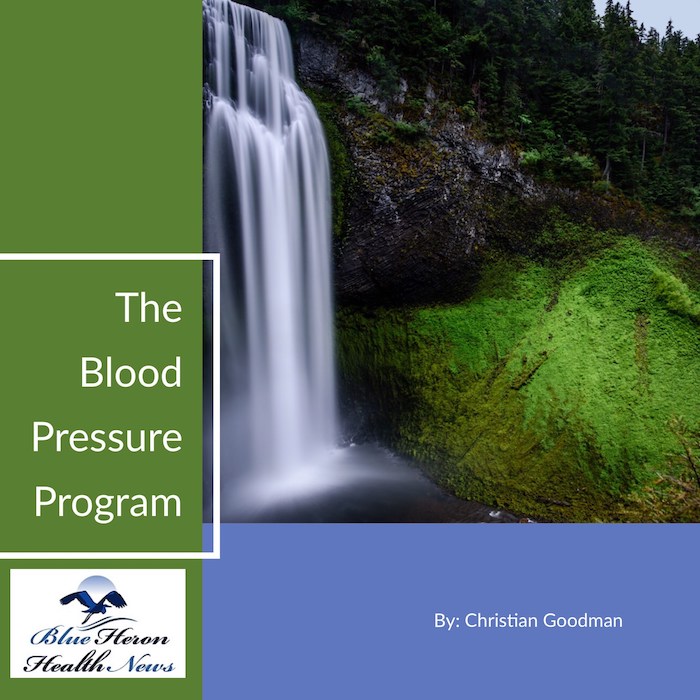
The Bloodpressure Program™ It is highly recommended for all those who are suffering from high blood pressure. Most importantly, it doesn’t just treat the symptoms but also addresses the whole issue. You can surely buy it if you are suffering from high blood pressure. It is an easy and simple way to treat abnormal blood pressure.
What is the role of the renin-angiotensin system in blood pressure regulation?
The renin-angiotensin system (RAS) plays a crucial role in regulating blood pressure and maintaining fluid balance within the body. It is a complex hormonal system that helps control blood volume, sodium levels, and vascular tone, which together influence blood pressure. Here’s a breakdown of how the renin-angiotensin system works in blood pressure regulation:
1. Triggering the Renin-Angiotensin System:
The RAS is activated when the kidneys detect certain changes that can affect blood pressure, such as:
- Low Blood Pressure: When blood pressure drops, the kidneys sense a reduction in blood flow, often through the renal arteries.
- Low Sodium Levels: If sodium levels in the blood are low, the kidneys recognize this as a signal that more fluid and sodium retention is needed to maintain blood pressure.
- Sympathetic Nervous System Activation: Stress or low blood pressure can stimulate the sympathetic nervous system, which also triggers the release of renin from the kidneys.
2. Renin Release:
- In response to these triggers, the juxtaglomerular cells in the kidneys release renin, an enzyme that plays the first critical role in the cascade of the RAS.
3. Conversion of Angiotensinogen to Angiotensin I:
- Renin acts on angiotensinogen, a protein produced by the liver and circulating in the bloodstream, converting it into angiotensin I.
- Angiotensin I itself is not very active but serves as a precursor for the next step in the cascade.
4. Conversion to Angiotensin II:
- Angiotensin I is converted into angiotensin II primarily in the lungs by the enzyme angiotensin-converting enzyme (ACE).
- Angiotensin II is the most active form of the hormone and is the primary regulator of blood pressure in this system.
5. Effects of Angiotensin II:
Angiotensin II has several key actions that help raise blood pressure and restore normal circulation:
- Vasoconstriction: Angiotensin II constricts blood vessels (vasoconstriction), which increases vascular resistance. This raises blood pressure by making it more difficult for blood to flow through the narrowed vessels.
- Stimulates Aldosterone Release: Angiotensin II stimulates the adrenal glands to release aldosterone, a hormone that promotes sodium retention by the kidneys. This increases water retention, boosting blood volume and, subsequently, blood pressure.
- Stimulates Antidiuretic Hormone (ADH) Release: Angiotensin II also stimulates the release of ADH (also called vasopressin) from the pituitary gland. ADH causes the kidneys to retain water, further increasing blood volume and blood pressure.
- Thirst Response: Angiotensin II triggers the sensation of thirst, encouraging the intake of fluids, which also helps increase blood volume and pressure.
- Increased Sympathetic Activity: Angiotensin II can also enhance sympathetic nervous system activity, leading to further vasoconstriction and an increase in heart rate, both of which raise blood pressure.
6. Regulation of Blood Pressure:
Through these actions, the renin-angiotensin system helps maintain homeostasis by adjusting blood volume, fluid balance, and vascular tone to ensure that blood pressure stays within an optimal range. This is particularly important in situations such as dehydration, blood loss, or low sodium levels, where the body needs to rapidly respond to preserve adequate circulation to vital organs.
7. Negative Feedback Loop:
Once blood pressure and fluid balance are restored, the RAS system has feedback mechanisms in place to reduce the release of renin. For example, as blood pressure rises and sodium levels stabilize, renin release from the kidneys decreases, preventing excessive blood pressure elevation.
8. Chronic Activation and Hypertension:
When the renin-angiotensin system is chronically activated, it can contribute to the development of hypertension (high blood pressure). This can happen due to various factors, including:
- Kidney Disease: Conditions like chronic kidney disease can lead to excessive renin production, resulting in sustained high blood pressure.
- Overactive RAS: In some cases, the system may become overly active, leading to persistent vasoconstriction, fluid retention, and increased blood pressure, which can damage organs over time (e.g., heart, kidneys, eyes).
9. Pharmacological Interventions:
Several medications target different parts of the renin-angiotensin system to help manage high blood pressure:
- Angiotensin-Converting Enzyme (ACE) Inhibitors: These medications block the conversion of angiotensin I to angiotensin II, thereby reducing vasoconstriction and lowering blood pressure.
- Angiotensin II Receptor Blockers (ARBs): These drugs block the receptors that angiotensin II binds to, preventing its effects on blood vessels and aldosterone release.
- Renin Inhibitors: These medications directly inhibit renin activity, preventing the initiation of the cascade that leads to high blood pressure.
- Aldosterone Antagonists: These drugs block the effects of aldosterone, preventing sodium retention and fluid buildup.
Conclusion:
The renin-angiotensin system is a critical regulator of blood pressure that works by increasing blood volume, causing blood vessel constriction, and stimulating the release of hormones like aldosterone and ADH. Its role in blood pressure regulation is vital for responding to changes in blood volume or pressure, ensuring proper circulation and fluid balance. However, when the system is overactive, it can contribute to the development of hypertension, leading to increased cardiovascular risks. Medications targeting the RAS are commonly used to treat hypertension and prevent the complications associated with high blood pressure.
Biofeedback is a technique that helps individuals learn to control physiological functions by becoming more aware of their body’s processes. It is used as a complementary treatment for managing high blood pressure (hypertension) by training individuals to regulate functions like heart rate, muscle tension, and breathing patterns. The aim is to promote relaxation and reduce stress, both of which can contribute to lowering blood pressure. Here’s how biofeedback can help manage high blood pressure:
1. Increasing Awareness of Physiological Responses:
- Biofeedback Training: In a typical biofeedback session, sensors are attached to the skin to monitor physiological markers such as heart rate, blood pressure, skin temperature, muscle tension, and breathing. These sensors provide real-time feedback to the individual, helping them become more aware of how their body responds to stress and relaxation.
- Self-Regulation: Over time, individuals learn to control certain physiological functions, such as reducing heart rate or muscle tension, in response to the feedback. By practicing this, they can achieve a state of relaxation that counteracts the effects of stress, which is often a contributing factor to high blood pressure.
2. Stress Reduction:
- Relaxation Techniques: Stress is a key factor that can elevate blood pressure. Biofeedback teaches relaxation techniques such as deep breathing, progressive muscle relaxation, and visualization, which can help activate the parasympathetic nervous system (the body’s “rest and digest” system) and lower heart rate and blood pressure.
- Autonomic Nervous System Regulation: The goal is to teach individuals to calm the overactive sympathetic nervous system (which is responsible for the fight-or-flight response) by enhancing parasympathetic activity. This balance can help reduce the physiological markers of stress, such as increased heart rate and blood pressure.
3. Heart Rate Variability (HRV) Training:
- HRV as a Blood Pressure Regulator: One of the most common biofeedback approaches used for hypertension involves monitoring heart rate variability (HRV). HRV refers to the variation in time intervals between heartbeats and is an indicator of how well the body can adapt to stress.
- Improving HRV: Research suggests that improving HRV can help reduce blood pressure. Biofeedback training can help people learn to increase their HRV, which is associated with a better ability to regulate blood pressure and respond to stress more effectively.
4. Reducing Muscle Tension:
- Muscle Relaxation: Biofeedback can also be used to help reduce muscle tension, which can be caused by stress. Prolonged muscle tension can lead to discomfort and contribute to higher blood pressure.
- Muscle Tension Biofeedback: By using sensors that measure muscle activity, biofeedback teaches individuals how to relax tense muscles, leading to an overall sense of relaxation and, in turn, potentially lowering blood pressure.
5. Improved Breathing Patterns:
- Breathing Exercises: In biofeedback sessions, individuals can learn to regulate their breathing patterns. Slow, deep breathing (such as diaphragmatic breathing) can activate the parasympathetic nervous system, promoting relaxation and reducing stress-related blood pressure spikes.
- Breathing Biofeedback: Biofeedback devices that monitor breathing patterns can help individuals achieve slower, deeper, and more controlled breathing, which can lower heart rate and blood pressure over time.
6. Autonomic Nervous System Balance:
- Managing the Sympathetic and Parasympathetic Systems: High blood pressure is often linked to an overactive sympathetic nervous system (which increases heart rate and constricts blood vessels). Biofeedback helps individuals balance the sympathetic and parasympathetic nervous systems, encouraging the “rest and digest” response and reducing the “fight or flight” reaction that elevates blood pressure.
7. Long-Term Benefits:
- Sustained Blood Pressure Reduction: Research suggests that regular biofeedback sessions, when combined with other lifestyle changes like exercise and dietary improvements, can lead to a sustained reduction in blood pressure. While the effects may vary between individuals, biofeedback has been shown to have a positive impact on long-term blood pressure management.
- Empowerment and Self-Management: One of the key benefits of biofeedback is that it empowers individuals to take an active role in managing their health. By learning how to control physiological processes, individuals feel more in control of their condition and can integrate these techniques into their daily routine to manage stress and prevent blood pressure spikes.
8. Complementary to Other Treatments:
- Not a Standalone Treatment: While biofeedback can be an effective tool for managing high blood pressure, it is typically used in conjunction with other treatments, such as medication, lifestyle changes (diet, exercise), and stress management techniques. It is not usually considered a standalone treatment but rather a complementary strategy that can enhance the overall management plan.
Conclusion:
Biofeedback can be an effective and non-invasive way to manage high blood pressure by teaching individuals to regulate their physiological responses to stress. Through increased awareness of heart rate, breathing, and muscle tension, biofeedback helps individuals develop relaxation techniques that can lower blood pressure. By improving autonomic nervous system balance and reducing stress, biofeedback can play a valuable role in blood pressure management, especially when combined with other lifestyle changes and treatments.
The Bloodpressure Program™ It is highly recommended for all those who are suffering from high blood pressure. Most importantly, it doesn’t just treat the symptoms but also addresses the whole issue. You can surely buy it if you are suffering from high blood pressure. It is an easy and simple way to treat abnormal blood pressure
